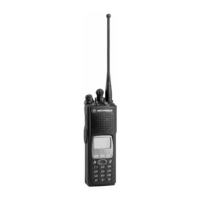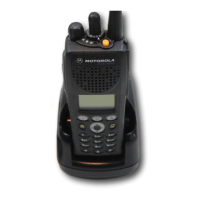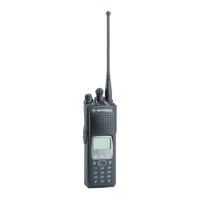Disassembly/Reassembly Procedures
54
Miscellaneous
Hardware
Other items needed for testing the submersible radio include:
• Large water container.
• Deionized (DI) water
• A supply of replacement seals, o-rings, and gaskets (refer to the
ASTRO XTS 5000 R exploded view parts list).
Disassembly and
Reassembly
If disassembly and reassembly of the radio is required, refer to“Radio
Disassembly and Reassembly” on page 48.
Disassembly Disassemble the radio according to “Disassembly” on page 48.
Reassembly Reassemble the radio according to “Reassembly” on page 50. Tighten
all hardware that was loosened or removed.
Do not reassemble the radio without first performing the
following preliminary inspection procedure.
1. Remove the main seal o-ring from the casting.
2. Inspect the seal area around the casting for foreign material that
might prevent the main seal o-ring from sealing properly.
3. Install a new main seal o-ring; discard the old o-ring.
4. Reassemble the housing.
The main seal o-ring should not be visible when looking at
the back side of the radio. If the seal is visible, it is
improperly installed.
Vacuum Test Refer to the exploded view diagrams and parts lists in this manual.
General The vacuum test uses a vacuum pump and gauge. The pump creates a
vacuum condition inside the radio, and the gauge monitors the radio
for a stable vacuum reading; that is, checking for a properly sealed,
watertight unit. Before starting the vacuum test:
• Remove the battery.
• Remove the universal connector cover to expose the universal
connector.
Conducting the Test 1. Attach the vacuum hose to the vacuum pump. Check the pump
and hose for leaks by blocking off the open end of the hose and
operating the pump a few times. The actual reading of the gauge
at this point is not important; it is important that the gauge
pointer remains steady, indicating no vacuum leaks in the pump.
2. Remove the vacuum test port using a pair of needle-nosed pliers
and pulling upward.
3. Ensure that a rubber gasket is attached to the hose-to-casting
adapter. Screw the adapter into the tapped hole in the casting.

